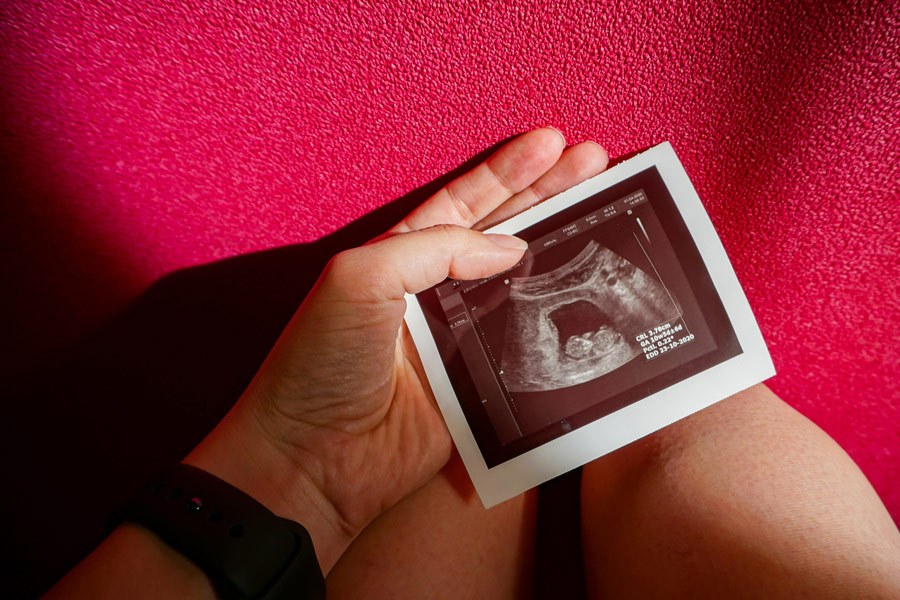
Becoming pregnant can be an overwhelming experience. It is a whole new adventure that demands your time, patience, resilience, and, most importantly, necessitates your care.
Every stage of pregnancy holds different sets of risks, which in turn can increase a person’s chance of miscarriage. Miscarriage is an unfortunate event wherein a mother experiences a sudden loss of pregnancy before the 20th week. As per StatPearls Publishing, it is estimated that as many as 26% of all pregnancies end in miscarriage and up to 10% of clinically recognised pregnancies.
Table of Content:-
Speaking with the OnlyMyHealth team, Dr Muthineni Rajini, Senior Consultant Obstetrician and Gynaecologist and Infertility Specialist, CARE Hospitals, Banjara Hills, Hyderabad, discusses the common risk factors of pregnancy loss and shares the riskiest time for pregnant women.
Also Read: What Are The Symptoms And Causes Of A Miscarriage?
Risk Of Pregnancy Loss

According to Dr Rajini, females aged above 35 face an increased risk of miscarriage, and it increases as they get older.
“At 35, the risk is around 20%, which increases to around 33–40% by age 40 and significantly jumps to a range of 57–80% by 45 years of age,” she shares.
Additionally, if a female has a history of previous miscarriages, it could increase the risk of experiencing another one, the doctor adds.
If you have pre-existing health conditions, such as uncontrolled diabetes, weak cervical tissues, hormonal imbalance, and obesity, it may also contribute to miscarriage risk.
It is important to note that lifestyle factors such as smoking, heavy caffeine intake, alcohol, and illicit drug use like cocaine can further elevate the risk.
When Is The Riskiest Time?

Though there is no definite way to predict pregnancy loss, Dr Rajini says that most miscarriages happen within the first three months of pregnancy, typically around the first 13 weeks.
In fact, 80% of pregnancy losses occur during the first trimester, with a majority occurring before 10 weeks, research suggests.
Although signs of a miscarriage may vary, they often include vaginal bleeding, light spotting, or heavy bleeding. One may also experience pain or cramps in the pelvic area or lower back, whereas some females may also notice fluid or tissue passing from the vagina or experience a faster than usual heartbeat.
From a medical point of view, a pregnancy is often considered to be relatively safer around the 12-week mark.
Also Read: Expert Lists Down Top 5 Nutrient-Packed Dals for a Healthy Pregnancy
Safety Measures To Take
Here are some safety measures to take to reduce the risk of miscarriage or pregnancy loss:
- Get regular prenatal care both during pregnancy and post-birth
- Avoid known risk factors such as smoking, alcohol consumption, and illicit drug intake
- Ensure that you are taking a daily multivitamin to support your overall health
- Limit your caffeine intake
- Make sure to manage chronic health conditions effectively
- Avoid exposing yourself to extreme heat
- Avoid taking stress
- Cut down on junk foods
- Avoid high impact workouts
Remember, it is also crucial for pregnant women to distance themselves from second-hand smoke, paint fumes, X-ray exposure, pesticides, and harsh household cleaners.
Should Women Exercise During Pregnancy?

According to Dr Rajini, exercise is generally considered safe and is even recommended during pregnancy.
"If you were exercising before becoming pregnant, you can continue exercising during pregnancy as well, unless advised otherwise by your doctor," she says.
However, it is best to consult with your doctor before starting any new exercise routine, she recommends.
Some common exercise tips to keep in mind include:
- Indulge in low-impact workouts such as prenatal yoga
- Exercise caution during any physical activity, and avoid overdoing it
- Avoid activities that increase the risk of falling, causing abdominal trauma
- Steer clear of exercises that involve excessive jumping, twisting, or bouncing
- Do not exercise in hot or humid climates or to the point of exhaustion
Conclusion
It is important to remember that the foetus is extremely vulnerable during the first trimester. The risk of pregnancy loss is highest during the first three months of pregnancy. Taking necessary measures to not only ensure the baby’s health but also the mother’s well-being is of utmost importance. Avoid contributing to the already-existing list of factors that increase the risk of pregnancy loss. Eat a healthy and balanced diet rich in vegetables, whole grains, and fruits. Exercise caution during any physical activity, and cut off alcohol and caffeine intake for a healthier pregnancy.
Also watch this video
How we keep this article up to date:
We work with experts and keep a close eye on the latest in health and wellness. Whenever there is a new research or helpful information, we update our articles with accurate and useful advice.
Current Version